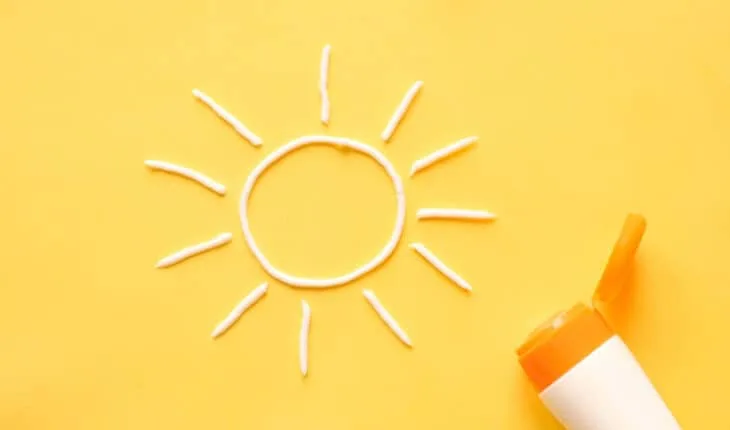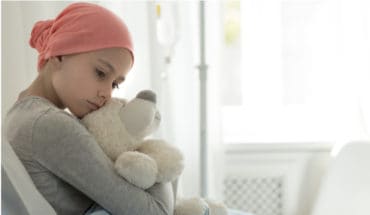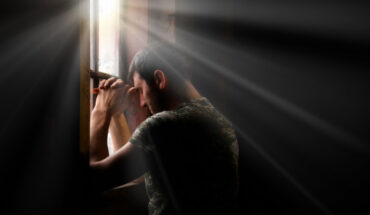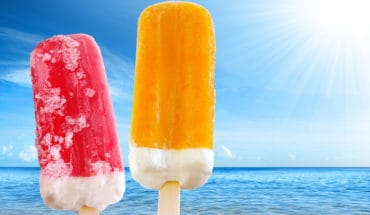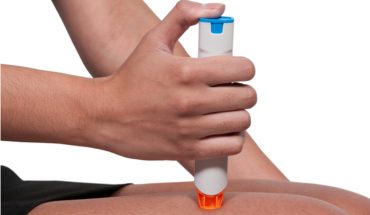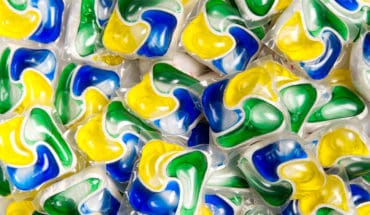Baby summer sunshine safety: Every summer there are well-publicised campaigns about the dangers of allowing babies and children to overheat in cars or buggies. Overheating in this way has even been implicated as a contributory factor to SIDS (Sudden Infant Death Syndrome).
This article will provide clear information to enable you to make the best decisions in protecting your baby from sun and heat.
Is it safe for my baby to go out in the sun?
Whilst babies are under six months old, they are advised to be kept out of strong direct sunlight. Babies’ skin is much thinner than children or adults, so UV rays can cause sun damage in a very short space of time. Babies are also more susceptible to heat, thus increasing temperatures can make them seriously unwell and has been linked to Sudden Infant Death Syndrome (SIDS).
Risks: The two main concerns are:
- Overheating.
- Sunburn.
Sunburn at a young age has been demonstrably linked to a higher rate of skin cancer – a US study found that severe burns at a young age increased chances of melanoma (a form of skin cancer) by 80%.
Timings:
If possible, avoid going out during the hottest hours which are from 10am to 3pm. This is because the UV levels and temperatures are highest during this time.
Choose a breathable and UV protecting buggy cover:
When travelling with the baby in a pram, ensure you have an adequate and safe cover, to protect your baby from the harmful UV rays whilst allowing:
- Easy accessibility to facilitate regular checks on your child; and
- Sufficient air circulation within the pram which will help regulate the temperature for your child.
The Lullaby Trust has warned that covering your pram or buggy with blankets (or cloths and covers) can lead to heat being trapped within the buggy and could cause your baby to dangerously overheat. The Lullaby Trust recommend attaching a clip-on sunshade or parasol to a pram or buggy and checking if the baby is getting too hot by feeling their tummy or the back of their neck. They advise to keep babies out of direct sunlight as much as possible.
Can I use a parasol?
Parasols pose no risk to blocking air circulation, however they may not provide much shade. Plus, the area they shade will shift as the sun moves or as you travel. This means your baby might suddenly be sitting in direct sunlight without you noticing. Also, not all parasols are UV resistant. If you decide to use a parasol, ensure you choose a UV resistant version and that you consistently check that your baby remains shaded by the parasol.
Can I use a muslin cloth?
Many parents choose to clip a muslin nappy across the buggy to shade their little one from the sun. This is not the worst solution, but muslin is not UV resistant so it cannot protect your baby from the sun’s most harmful rays.
What’s the ultimate safest option?
My personal preference would be to use a buggy cover made of UV resistant but fully breathable material, that covers the whole opening of the buggy, but allows the air to circulate. The best of these have zips to enable the parents to quickly and easily check on their babies to ensure they are not getting too hot.
Parking your buggy:
Remember that the sun will move and so if you have parked your buggy in the shade, you need to continually check that the baby or child remains out of direct sunlight.
Regular checks:
It is important to regularly check on your baby to ensure they are not getting too hot. As babies are so sensitive to temperature, remember that even on overcast or lower temperature days, your baby could still overheat. You should regularly:
Check if your baby is sweating.
- Feel their tummy – it should be warm but not hot.
- Check for flushed or red cheeks.
You could carry a thermometer with you. You can purchase a specific baby digital thermometer which should be used in the baby’s armpit or ear. A healthy temperature hovers around 36.4 degrees centigrade.
Further protection for your baby:
Babies over six months old can enjoy a limited amount of sunlight, providing they have been protected by the appropriate measures.
Skin colour – Babies with very pale skins are most at risk from burning, however, babies with darker skin are still susceptible to sun damage! Do not exempt your baby or child from any of the advice given here due to skin colour.
Shade – UV rays can still burn and overheat babies in the shade!
Clothing:
Choose darker, tighter-weaved clothing that covers the baby’s whole body. Look for garments with a UPF of 50 which will block 98% of UV radiation. Materials such as lycra and nylon are good options. Young ones should wear wide-brimmed sun hats (not caps) which will shade their necks and ears too. They also require sun glasses to protect their eyes. Sunglasses should meet the British Standard (BSEN 1836:2005) and carry the CE mark – check the label. This is because the UV rays can cause eye damage to a baby’s young eyes.
Sun cream:
In the UK the general advice is that children under 6 months should not use sun cream.
Why?
Infants’ skin is thinner than adults, with a much thinner stratum corneum, the dead outermost skin layer. Therefore, an infant’s skin is less able to protect the body effectively against chemicals in sunscreen which could penetrate deeper into their skin, making newborn babies more vulnerable to allergic reactions such as contact dermatitis, inflammation or other harmful effects from chemical absorption. Newborn skin also lacks the film on the skin’s surface (known as the acid mantle) that protects the skin from bacteria viruses, and trans-epidermal water loss (TEWL), a condition that can lead to dehydration. The lack of the acid mantle could leave babies more vulnerable to the chemicals in sunscreen.
Babies also have a higher surface area-to-body weight ratio than older children and adults. A baby’s body surface area is about four times the body surface area-to-weight ratio in adults, which gives a far greater body surface area and leaves them exposed to far greater penetration by chemicals. In adults, most sunscreen ingredients don’t get absorbed systemically into the bloodstream — and those that do are absorbed in tiny amounts. However, for babies this is far more likely. In addition, babies could try and lick sun cream from their bodies causing it to be ingested. This is another reason the Skin Cancer Foundation recommends delaying the use of sunscreen until your baby is at least six months old.
Using sunscreen
If your baby has reached over six months of age, they should be wearing sun cream from around April to October (use your judgement to decide – they may need it as early as March, weather dependent). Babies and young children are more prone to rashes than adults. One fifth of adults report skin irritation from sun cream, so it is important to:
- Choose a sun cream designed for babies.
- Test the cream first.
- Choose a hypoallergenic sun cream specifically designed for babies. You must use a high factor (SPF 50). It should have at least a four-star UVA and UVB protection rating. There are specific sun creams created for babies which you can buy. Check the expiry date and discard when out of date. Some brands offer tinted versions of sun cream so that you can see where you have put the product.
Do a swab check:
We would always recommend trying sunscreen on a small area of your baby’s skin (doing a patch test) to make sure your baby can tolerate the product. Apply the small area before you need to rely on the sunscreen to protect them from the sun and check the area for signs of redness or allergy for the next few hours. If there is no reaction, you can then apply this to all exposed areas of their body. When trying a new brand, always patch test in this way too.
How to apply it:
Use enough! Many people do not use enough sun cream – so make sure that you use at least a tablespoon of sun cream if covering the legs and arms of a baby. Apply sunscreen liberally to any area of your baby’s skin that isn’t covered up by clothes or a hat. Remember to include his hands and feet, and the back of his neck and ears.
Pat, don’t rub:
It’s best to pat it on rather than rub it in. If you can, put sunscreen on your baby 15 minutes before they are exposed to any sun. Cover exposed parts of your child’s skin with sunscreen, even on cloudy or overcast days. Apply sunscreen to areas not protected by clothing, such as the face, ears, feet and backs of hands. Be especially careful to protect your child’s shoulders and the back of their neck when they’re playing, as these are the most common areas for sunburn.
Reapplication:
Reapply the sunscreen at least every couple of hours and after they have played in water, even if the sunscreen claims to be waterproof. Some water-resistant products may only protect your baby’s skin for up to 40 minutes of water play, while others may protect for up to 80 minutes.
Other tips for keeping your baby safe from the heat and sun in summer:
Fluids:
Fully breastfed babies should not need to be given extra water – but do check for any signs of dehydration. Otherwise, babies under 6 months should be regularly given cooled boiled water. Over six months of age, they can drink regular water.
Sleep:
In summer, it is best to create a cool sleeping environment for your baby. Place your baby feet to the foot of the cot, on a flat mattress without blankets or pillows. When out and about in the summer with your baby in a buggy or pram, sleep can be more problematic. Don’t put a blanket over the pram to block out the sunlight as this can trap warm air within the buggy, causing the temperature to soar to dangerous levels. Instead ideally opt for a mesh pram cover that will block out sunlight and allow air to circulate. Always ensure you park your buggy in the shade and keep checking to ensure it remains shaded and cool.
Cloudy days:
Remember, you can still burn in the shade. Sun protection remains essential even on overcast days. If the temperature seems low to you, remember that it could still affect a young baby or child.
The impact of water:
Many people do not know that if you are on or near a body of water, this will dramatically increase the potency of the sun’s rays. You should reapply sun cream after swimming.
If your baby has sunburn:
Firstly, don’t panic. Although sun protection is incredibly important, as explained above, it is by no means abnormal for a child to get a bit burned in the sun and it doesn’t mean they will definitely develop skin cancer. Do, however, treat the burn more seriously than you would an adult’s. Remove them from the sunlight immediately and take them indoors, preferably into a cool or air-conditioned environment. Shower the affected area for 10 minutes under tepid water, then apply neat aloe vera. Seek immediate medical advice if a baby or child has become sunburnt, particularly if their skin has blistered. Give them regular drinks of cool water to ensure they remain hydrated. If they show signs of heat exhaustion – hot, flushed, sweaty, unsettled, vomiting or diarrhoea – always get medical advice immediately.
With these tips in mind, we hope you and your baby or young children have an enjoyable and burn-free summer together. Enjoy the sunshine!
- What is a seizure? - 13th March 2025
- Febrile Convulsions and Seizures in Children - 13th March 2025
- Why women are less likely to receive CPR or survive cardiac arrest - 6th March 2025

